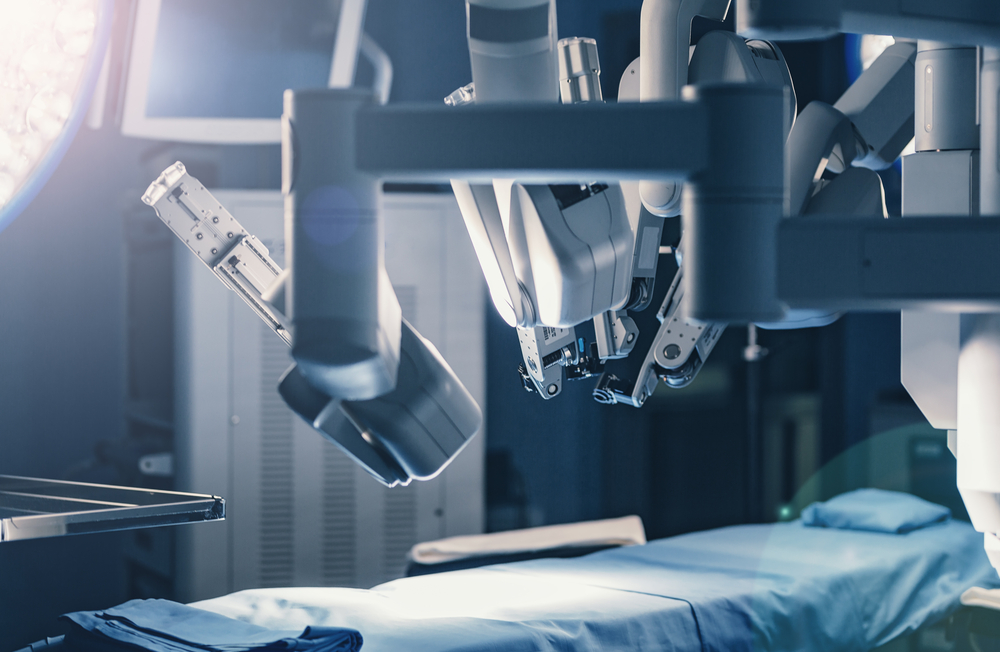Robotic Surgery and Emerging Technologies in MG!

If you or someone you know is living with myasthenia gravis (MG), you know just how much this pesky autoimmune disorder can disrupt your life. But don't worry, emerging technologies and treatment options are starting to turn the tide in the fight against MG!
We'll take a closer look at robotic surgery and other emerging treatment options and discuss how these advancements are changing the game for patients and healthcare providers alike.
Robotic Surgery in Myasthenia Gravis Care
Robotic surgery is a fancy surgery that uses robotic arms to perform precise and complicated procedures. In myasthenia gravis care, robotic surgery has been used to perform thymectomies, which remove the thymus gland. The thymus gland is thought to be involved in the development of MG, and thymectomy can ease symptoms and reduce the need for medication in some patients.
Advantages
Robotic thymectomy for myasthenia gravis has some wonderous benefits, like smaller incisions, less pain and scarring, reduced risk of infection, and quicker recovery time. Plus, the robot arms allow for better visuals and precise surgical techniques, leading to better patient outcomes.
Besides, some studies have shown that robotic thymectomy for myasthenia gravis can be performed safely and effectively in older patients and those with more advanced diseases who may not be ideal candidates for traditional open robotic thymectomy for myasthenia gravis.
Da Vinci Surgical System
One example of robotic surgery in myasthenia gravis care is the da Vinci surgical system, which has been used to perform thymectomies with fantastic results. The da Vinci system uses teeny-tiny incisions and 3D visualization to allow the surgeon to perform precise movements with the robotic arms. The surgeon sits at a console and controls the robot arms, which are equipped with miniature cameras and surgical instruments.
Emerging Technologies in Myasthenia Gravis Care
Emerging technologies are market-leading propositions that could change the game for healthcare. In myasthenia gravis care, emerging technologies include neuromodulation, stem cell therapy, and gene therapy.
Neuromodulation is like using electrical or magnetic stimulation to modulate the nervous system, while stem cell therapy and gene therapy aim to regenerate or replace damaged cells and tissues.
Advantages
The advantages of emerging technologies in myasthenia gravis care are stellar: disease modification, personalized medicine, and less need for medication. For example, neuromodulation has been shown to improve symptoms in some patients with refractory MG, who don't respond to traditional treatments.
Stem cell therapy and gene therapy offer the possibility of long-term disease modification by replacing damaged cells and correcting underlying genetic defects.
Disadvantages
While both robotic surgery and emerging technologies offer potential advantages in myasthenia gravis care, there are also some disadvantages to consider. One downside of robotic surgery is the cost since the equipment and training required can be pricey.
Examples of Emerging Technologies
One example of emerging technologies in myasthenia gravis treatment is the use of low- frequency magnetic stimulation (LFMS) to modulate the neuromuscular junction. LFMS has been shown to improve symptoms in some patients with refractory MG and is currently being studied as a potential treatment option.
Myasthenia Gravis Treatment Options
Myasthenia gravis really messes with your muscles, leaving you weak and exhausted. But don't fret! However, myasthenia gravis treatment options are plenty to help you manage the symptoms and improve your quality of life.
1. Medications: These little guys can really work wonders! Acetylcholinesterase inhibitors like pyridostigmine, corticosteroids, and immunosuppressive drugs such as azathioprine, methotrexate, cyclosporine, and mycophenolate mofetil can make all the difference in boosting your muscle strength and reducing symptoms.
2. Plasma exchange and IVIG therapy: Plasma exchange and IVIG therapy are other myasthenia gravis treatment options if medications aren't cutting it. They remove or modify the pesky antibodies that are attacking your neuromuscular junction.
3. Thymectomy: If things are still not improving, we might need to get a little more radical with a thymectomy. That's just a fancy term for removing the thymus gland from your chest, which is believed to help manage symptoms and prevent disease progression.
4. Supportive Measures: Supportive measures like physical therapy, occupational therapy, and speech therapy can help you learn how to use your muscles more efficiently and manage those annoying speech and swallowing difficulties.
5. Lifestyle Changes: Don't underestimate the power of lifestyle changes! Avoid activities that wear you out, get plenty of rest, reduce stress, and eat a healthy diet to keep those symptoms at bay.
Myasthenia Gravis Diagnosis
Now, myasthenia gravis diagnosis can be challenging, as symptoms can be diverse and mimic other conditions. Trained doctors have years of experience and the right skills to establish the diagnosis and chalk out an appropriate treatment plan.
One common test for myasthenia gravis diagnosis is the Tensilon test, where they inject a medication called edrophonium chloride to see if it improves muscle weakness. It is an important step in determining and seeing if the drug can bring the patient's strength back.
Doctors can also use blood tests to look for specific antibodies associated with MG. Imaging studies like CT or MRI scans may also be used to rule out other potential causes of symptoms.
But it's not just about the tests - doctors rely on a patient's medical history and physical exam to diagnose. You might have to answer a bunch of questions about your symptoms and health, and they'll probably take a close look at things like your eyes and mouth to check for any signs of weakness.
Conclusion
We've talked about the role of emerging technologies in myasthenia gravis (MG) care and how they're helping patients manage this pesky autoimmune disorder. From robotic surgery to innovative drug therapies, some exciting developments are happening in MG treatment.
If you or someone you know is dealing with MG, don't be afraid to explore different treatment options and find what works best for you. You can also visit the Medanta Medicity Hospital for expert counselling and advice.






